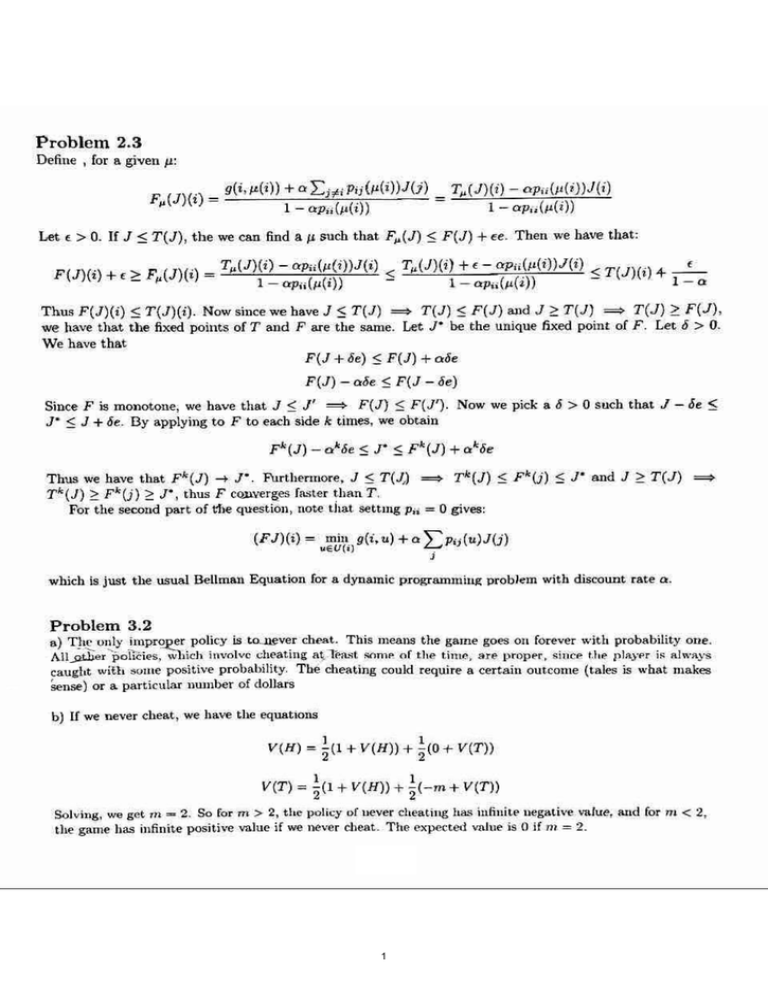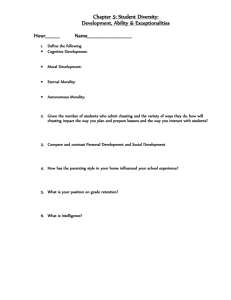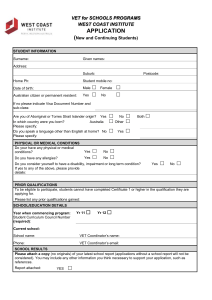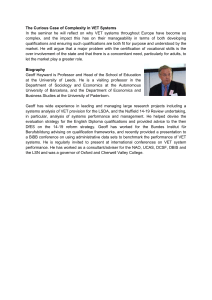Document 13342316
advertisement

Problem 2.3
Define , for a given W
F,.(J){i) "" g(i , J.l.(i»)
+ 0 LUi pij(ll(i)J(j) = T,.(J)(i) - oPii(JI(i) J(i)
1
Let
f
O;p;;{JI(i»
1 - Op,i{/I( i))
> O. If J :5 TCJ), the we can find a 11 such that F,..{J) :S FCJ)
F(J)(i)
+ ee. Then we have that:
+{- OPii.(/I(i»J(i) < T(J)(j)I-'­
1- QP;i(!I (~))
1 - 0:
+ {> F (J)(i) "" T,..(l)(i) - ap,i(/J(1))J(i) < T,..(J)(i)
-
,.
1 - o:p;;(/J(i»
-
V
=
Thus F(J)(i) ~ T(J)(i). Now since we have J :5 T(l) => T(J):S F(l) and J ?: T(J)
T (J ) 2: F(J) ,
we ha...-e that the fixed points of T and F are the sallie. Let J" he the unique fixed point of F. Let d > O.
We have tha.t
F(J + de) :5 FeJ) + ooe
Fel) -
ooe :S FCl -
oe)
Since F is monotone, we have that 1 :S J' => F(l):S F{1'). Now we pick a 6
JO :S J + oe. By applying to F to each side k times, we obtain
F"(J) - 0"'6e :s J" :S Fk(J)
> 0 such that
J -
+ Qkae
=
r.
Thus we have that F"'(J) -+
FUrthermore, 1 :S T(~)
TI«J):S Fk(j) :S 1" and J 2: T(J)
Tk(J) ~ Fk(j) ?: 1" , thus F .£5Ul-~es fa.~ter th!!J. T . V
For the second part of rue question, note that. setting p;;. = 0 gives:
which is just the usual Bellman Equation for a dynamic programming problem with discount rate
Problem 3.2
oe :5
=
Q. /
a) T1L.£.. ul.!..ly impr~er pS'.~~~y is to..ru:.'{El! ~~a~ This means the game goes OIL forever with pwbability one. ~r pcfici<'s, Wl,ich in volve ch('!l.ting a;.TpfLst !>(1m... or the time . are prol)t'r. sine.. !.I,,,. plll}"pr i~ Illwllys !caught ~H'-;;;;;-Le positive proba.bility. The cheating couk! require a certa.in outcome (tales is what makes
\.1sense) or a. particular nwnber of don~
fLe,~
e171)rJ'k (~t.<
-rh r,.y/
b) U we never cheat, we have the equations
V(H) =
~ ( l + V (H ) + ~(O + VeT))
1
VeT) = "2(1
1
+ V(H) + "2( -m + VeT)~
7
Solving, we get", _ 2. So for m > 2, the policy or never cheating has iuliuiU' negative
the game has infinite positive value if we never che/lt. The expected vIllue is 0 If
1
~"Rlue,
and for
111
< 2,
I
<;) First note th&.t it is never optimal to cheat at H . Note that the value of cheating if H cOllies up.
is:
V(H ) ~ (1 - p)(1
+ V(HII
Suppose we are at state H , we modify the policy so that we don't chent at one stage, but do che;ll at the
next stage. Then we have:
V(H)
~ ~(1 + V (H )) + ~[(1- p)(1 + V(H)))
=
1
1
'2 + l(V(H) + V(H »?:
1
2"V(H}
So we see that wealth is illlproved by not cheating at stage H, and therefore we have th at our policy must
pi!'}" fair at H. As we saw in part (bl , never cheflling wh€1I we have T and m > 2 gives negati \"c infinite
value. So we just have to calculate the value of always cheating. We have:
.
V{H) ==
~ [l + V(H )] + ~ VeT)
VeT) = p(1 - V(H»
=;
7"
Solving gives V(H)
and VeT) =
Since these are both greater thaI) negative infinity, we see t hat
when m > 2, it is always optimal to Che~t when tails and.Play fjWhen heads.
st~
d) The same- argulilClIl for never cheatmg when heflds IS
true. For cheating 011 tails, we have the
same argulllt'"ut, ouly now note that V(H) and VeT) are le!lS thall positive infinity (which is the value of
never cheating on tails), alld therefore it is always optimal to play fair .
J
2
MIT OpenCourseWare
http://ocw.mit.edu
6.231 Dynamic Programming and Stochastic Control
Fall 2015
For information about citing these materials or our Terms of Use, visit: http://ocw.mit.edu/terms.




